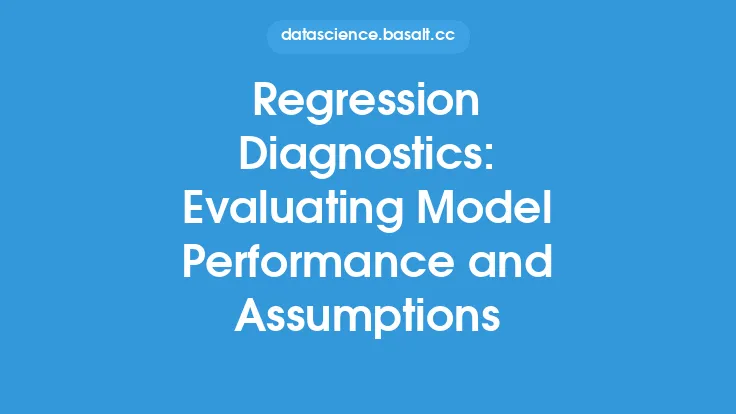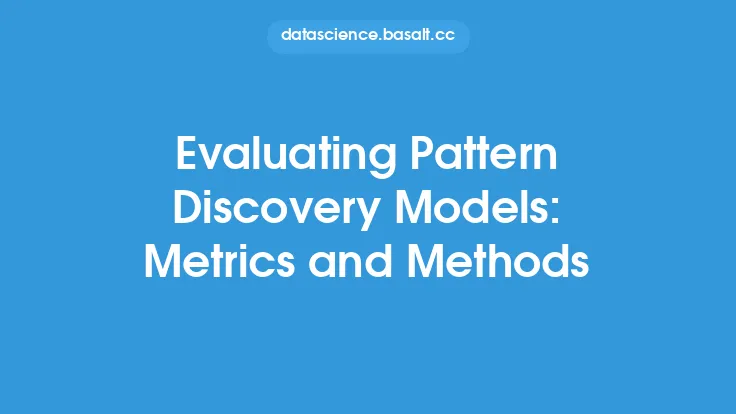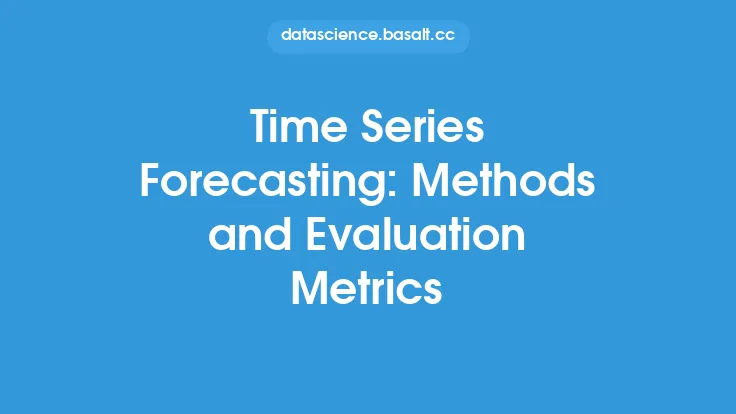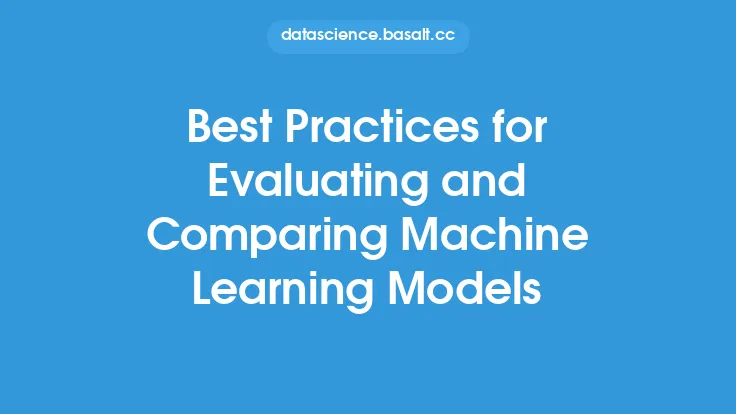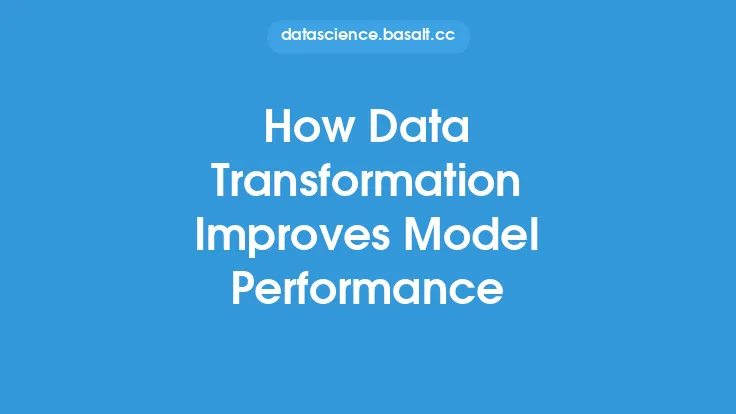Evaluating the performance of a machine learning model is a crucial step in the model development process. It helps to assess the model's ability to make accurate predictions, identify areas for improvement, and compare the performance of different models. In this article, we will delve into the various metrics and methods used to evaluate model performance, providing a comprehensive overview of the concepts and techniques involved.
Introduction to Model Evaluation Metrics
Model evaluation metrics are used to quantify the performance of a machine learning model. These metrics provide a way to measure the model's accuracy, precision, recall, and other aspects of its performance. The choice of metric depends on the specific problem being addressed, the type of data, and the goals of the project. Common evaluation metrics include accuracy, precision, recall, F1 score, mean squared error, mean absolute error, and R-squared. Each of these metrics has its strengths and weaknesses, and understanding their properties is essential for effective model evaluation.
Classification Metrics
Classification metrics are used to evaluate the performance of models that predict categorical outcomes. Accuracy, precision, recall, and F1 score are commonly used classification metrics. Accuracy measures the proportion of correctly classified instances, while precision measures the proportion of true positives among all positive predictions. Recall measures the proportion of true positives among all actual positive instances, and F1 score is the harmonic mean of precision and recall. These metrics are often used in combination to provide a comprehensive understanding of a model's performance. For example, a model with high accuracy but low recall may be biased towards the majority class, while a model with high recall but low precision may be prone to false positives.
Regression Metrics
Regression metrics are used to evaluate the performance of models that predict continuous outcomes. Mean squared error (MSE) and mean absolute error (MAE) are commonly used regression metrics. MSE measures the average squared difference between predicted and actual values, while MAE measures the average absolute difference. R-squared, also known as the coefficient of determination, measures the proportion of variance in the dependent variable that is predictable from the independent variable(s). These metrics provide a way to quantify the model's ability to make accurate predictions and identify areas for improvement.
Evaluation Methods
Evaluation methods refer to the techniques used to assess a model's performance. Cross-validation is a widely used evaluation method that involves splitting the data into training and testing sets, training the model on the training set, and evaluating its performance on the testing set. This process is repeated multiple times, with different splits of the data, to provide a robust estimate of the model's performance. Other evaluation methods include bootstrapping, which involves resampling the data with replacement, and walk-forward optimization, which involves evaluating the model's performance on a rolling basis.
Model Selection and Hyperparameter Tuning
Model selection and hyperparameter tuning are critical aspects of model evaluation. Model selection involves choosing the best model from a set of candidate models, while hyperparameter tuning involves adjusting the model's hyperparameters to optimize its performance. Common model selection techniques include grid search, random search, and Bayesian optimization. Grid search involves exhaustively searching through a predefined grid of hyperparameters, while random search involves randomly sampling the hyperparameter space. Bayesian optimization involves using a probabilistic approach to search for the optimal hyperparameters.
Interpreting Evaluation Results
Interpreting evaluation results is a critical step in the model development process. It involves analyzing the results of the evaluation metrics and methods to identify areas for improvement and optimize the model's performance. This may involve visualizing the results, using techniques such as ROC curves and precision-recall curves, to gain a deeper understanding of the model's strengths and weaknesses. It may also involve using techniques such as feature importance and partial dependence plots to understand how the model is using the input features to make predictions.
Common Challenges and Pitfalls
Common challenges and pitfalls in model evaluation include overfitting, underfitting, and data leakage. Overfitting occurs when a model is too complex and fits the noise in the training data, resulting in poor performance on new, unseen data. Underfitting occurs when a model is too simple and fails to capture the underlying patterns in the data. Data leakage occurs when information from the testing set is used to train the model, resulting in overly optimistic estimates of its performance. These challenges and pitfalls can be addressed by using techniques such as regularization, early stopping, and data splitting.
Best Practices for Model Evaluation
Best practices for model evaluation include using a combination of evaluation metrics and methods, using techniques such as cross-validation and bootstrapping to provide robust estimates of the model's performance, and using visualization techniques to gain a deeper understanding of the results. It is also essential to consider the problem being addressed, the type of data, and the goals of the project when choosing evaluation metrics and methods. Additionally, it is crucial to document the evaluation process and results, providing a clear and transparent record of the model's performance and any limitations or biases.
Conclusion
Evaluating model performance is a critical step in the machine learning workflow. By using a combination of evaluation metrics and methods, and considering the problem being addressed, the type of data, and the goals of the project, it is possible to gain a comprehensive understanding of a model's strengths and weaknesses. Common challenges and pitfalls, such as overfitting and data leakage, can be addressed by using techniques such as regularization and data splitting. By following best practices for model evaluation, it is possible to develop models that are accurate, reliable, and effective in real-world applications.
